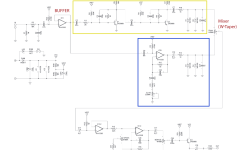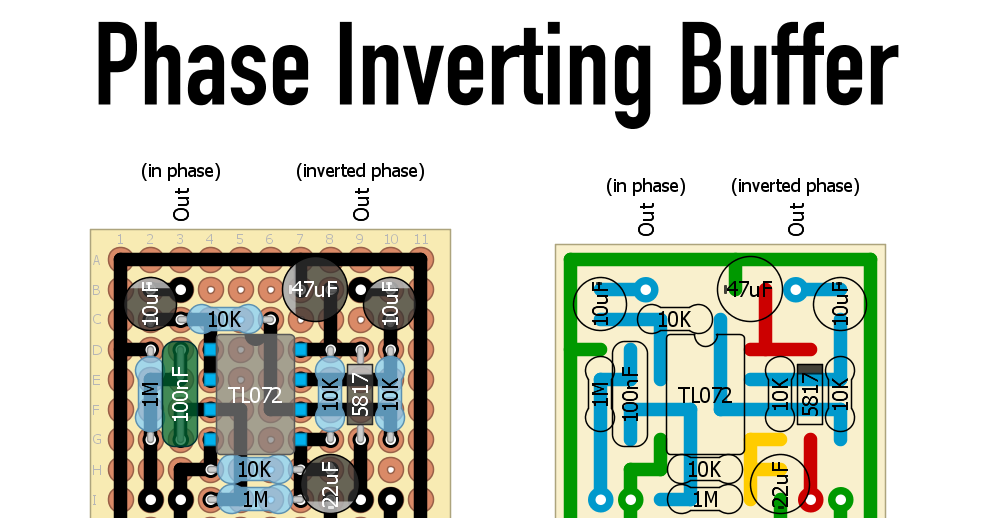nate433
Member
If you look at the schematic for the punkifier it has a Buffer -> Split into 2 circuits -> Combined through a W-Taper ->Output buffer -> Rest of the circuit
I'm obsessed using my OBNE Signal Blender. Plus the punkifier is a great underrated circuit. I would love to make a pedal where I combine 2 of my favorite gain pedals blended together like I use live. It would save me so much space going from 3 pedals to 1 haha.
So i had a few questions
1. Are there any considerations to keep in mind when doing this with other gain pedals? Impedance matching or something? Maybe normalizing the volumes so it doesn't jump up like crazy when you blend in the louder circuit? Phase issues? Or can you really just put whatever in between the buffers and you'll be fine?
2. Why is a W taper used? I assume one reason is it's at 50/50 at the mid point. Why is a liner taper not something you'd use?
Thanks!!
I'm obsessed using my OBNE Signal Blender. Plus the punkifier is a great underrated circuit. I would love to make a pedal where I combine 2 of my favorite gain pedals blended together like I use live. It would save me so much space going from 3 pedals to 1 haha.
So i had a few questions
1. Are there any considerations to keep in mind when doing this with other gain pedals? Impedance matching or something? Maybe normalizing the volumes so it doesn't jump up like crazy when you blend in the louder circuit? Phase issues? Or can you really just put whatever in between the buffers and you'll be fine?
2. Why is a W taper used? I assume one reason is it's at 50/50 at the mid point. Why is a liner taper not something you'd use?
Thanks!!




